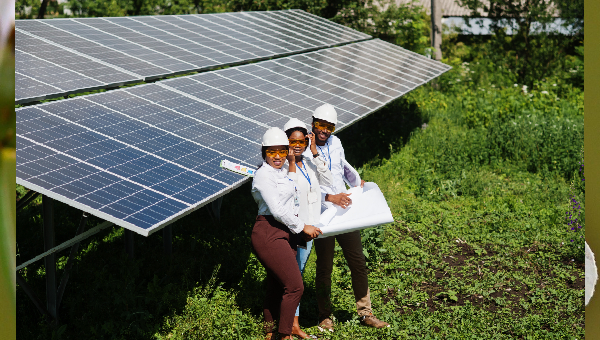From Sunlight to Socket: The Journey of Solar Energy

The need to switch to renewable types of energy has never been as high as it is in the age in which the effects of climate change are undeniable and the energy consumption in every single way is getting out of control. So how exactly are the energies of the sun converted into electricity that lights our houses, offices, and everyday life? This article embarks on an interesting journey to explore how solar energy is converted and delivered to you when you switch on your phone and connect it to a wall switch.
The Sun Force
The sun and its energy are not merely a space object but a virtually inexhaustible source of energy which provides the Earth with life and technology.
- Solar Energy: The sun produces and gives out a lot of energy in an immense quantity much beyond what humanity can utilize. Only a fraction of this energy is admitted to the Earth itself, but it is a huge and largely unutilised source. The energy comes in the form of photons, small packets of light which travel across space into our atmosphere within a few minutes.
- Capturing the Infinite Light Source on Earth: Solar source of energy provides an infinite and sustainable means to create electricity harnessing the perpetual and renewable source of light created by the sun. It does not have harmful emissions and depletion of natural resources, unlike fossil fuels. In addition, it is almost free when the technology is present. However, we must harness this source by transforming light into a form that can be utilized to generate electricity.
Step 1: Light Grabbing- Solar Panels
Solar panels can be viewed as an energy harvesting device to charge everything from your coffee maker to your car.
- At Heart Photovoltaic Cells: These cells come to the rescue when one is interested in taking advantage of the energy of the Sun. It is these small silicon units that provide the light of the sun as convertible electricity, and that can be found at the center of every solar panel. Electrons in spring come to life and an effective source of clean and renewable energy is created with the help of a mere touch of sunshine. It is also called the photovoltaic effect and it was originally discovered by a French physicist called Edmond Becquerel.
- The Organization of PV Panels: The solar panels include several solar cells, most of which are in modules. These are sequentially stacked: the outer layer of glass followed by another glass that is anti-reflective allowing optimum intensity of sun collected into the cells, the silicon-based cells, and the back sheet that gives structural strength.
Step 2: Conversion DC to AC
Inverters are the unsung heroes of making solar electric compatible with our daily lifestyle.
- The direct current (DC) electricity: The solar panels create electricity that passes in one direction without any fluctuations or changes which will reduce the amount of electric charge required. Most household and almost all the power grid however is alternating current (AC), now the electricity is pushed and pulled backwards and forwards in the circuit at regular intervals.
- The important role of the inverter: The system has been designed with an inverter that transforms DC to AC to make the electricity usable. The various types of inverters, e.g. string inverters, microinverters, and power optimizers provide a selection of options when it comes to how efficiently and flexibly your system is run.
Step 3: Reviving the Energy
Once the energy has been converted, it can power up your house, can be stored in batteries, or the current can be fed to the main power grid.
- Grid connection and Net metering: In grid-tied systems, the extra electricity produced by the solar panels can be transferred back to the utility grid. This is done under what is referred to as net metering where your electricity meter would go backward to credit you the excess supply of electricity. When the sun is not shining, like when it is nighttime or cloudy, then that power comes from the grid.
- Off-grid and hybrid Assemblies: In the case of remote positions (those not connected to a utility grid), solar power systems incorporate battery storage. Hybrid systems integrate solar power with other sources of power such as wind mills, diesel generators, and battery banks so that there is a regular and reliable supply of power.
Step 4: Storage Energy on Demand
The use of solar storage to use the sun during nighttime has given it the possibility of using its energy day and night.
- The revolution of power storage: Compared to the numerous innovations in the field of solar technology, the possibility of saving energy may be considered revolutionary. Batteries, in particular the lithium-ion ones, such as the Tesla Powerwall, enable users to store some solar energy produced during the day to be used during the night or when there is a power outage. Although it is still very expensive, the price is slowly falling thus the battery storage is becoming more viable.
- Intelligent energy usage: Software to control the energy production and usage is also available in modern systems. Intelligent inverters, home energy applications, and artificially intelligent energy management systems guarantee that the power is utilized effectively and that you make the best out of your solar investment.
Step 5: Usage- Panel to Your Plug
The last endpoint of the travel arrives as clean electricity to your devices, equipment, and vehicles.
- Everyday applications: When converted and spread out, you can use solar energy in every way, whether it is turning on the lights in the room you live in and switching on your air conditioner, or charging your electric vehicle. In a solar-powered space, the process is so smooth that the majority of the people forget that they are using the sun as their main source of energy.
- Integration and scalability: Solar energy is non-restrictive in terms of scale. It is used to run small garden lamps, all neighborhoods, and even industrial plants. Thousands of panels that make up solar farms transfer electricity into the grid in colossal numbers that would light up national needs.
Solar Power Benefits
There is a two-fold advantage of using solar power: you can make a difference to the planet and your cash flow.
- Minimizing carbon footprints: Solar energy contributes a lot to the reduction of greenhouse gas emissions. It will reduce air pollution and act against climate change by substituting fossil fuels. A normal solar home system will in itself make a reduction of a significant amount of carbon dioxide emission per year, possibly on an equivalent scale of removing trees from the system.
- Long-term money saving: Installing solar panels can be costly indeed, but the savings on your energy bill, in the long run, are so worth the initial investment. Governments generally have tax credits, rebates, and incentives that reduce the up-front cost. In the long term as a savings toward lower energy bills, and the potential to sell back any surplus to grid systems, solar becomes a cost-effective investment.
Technological and Innovation Development
The solar industry is still developing and opening the way to cleaner and more efficient power.
- Next-gen panels: Scientists are continuously trying to develop the technology of solar in the best way. Solar tiles, bifacial panels (which absorb sunlight on both sides), and thinfilm cells are innovations that are taking efficiency and aesthetics a step further.
- Cells and breakthroughs using perovskite: Probably one of the most promising trends is a material called perovskite, which is potentially cheaper and more efficient than silicon. Although it is not yet on a large-scale commercial basis, it has the chance to transform the solar business.
Conclusion
The path between the sunlight to the socket is the path of nature, science, and innovation that are best friends. As more panels are put in place, inverters switched on, and watts produced, solar energy is changing our sense of power. It has become no longer a choice, but a remedy that enables us to live smarter, cleaner, and more sustainably. The contribution of this technology will only increase as it continues to develop: it will shine in our living rooms, drive our economies, and lead the way to a new cleaner environment.
Must read this: Sunshine to Socket: The Journey of Solar Energy from Panels to Power Grids








